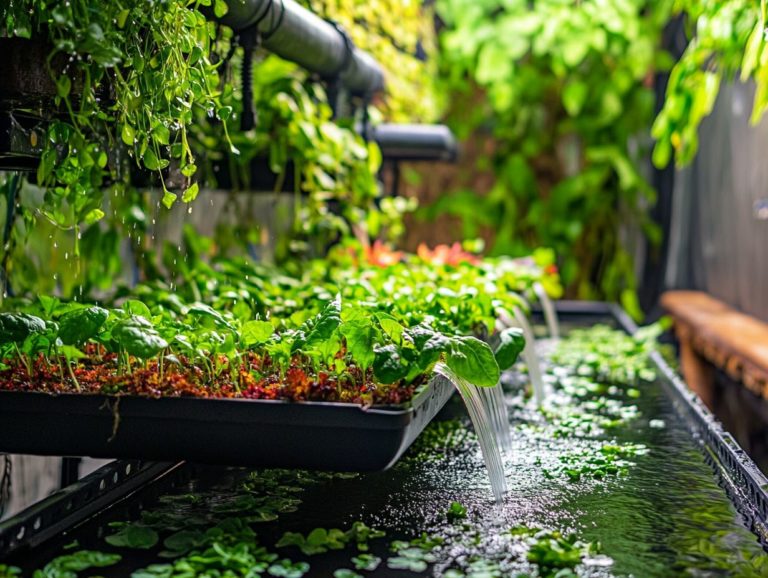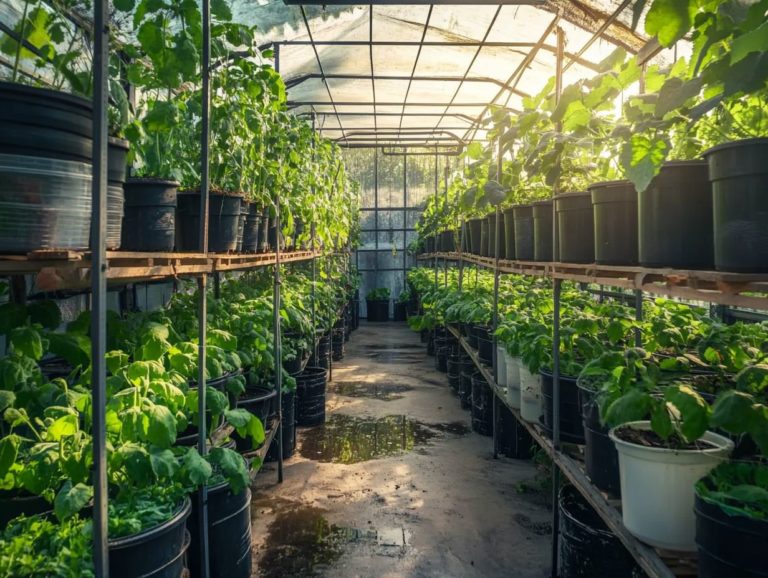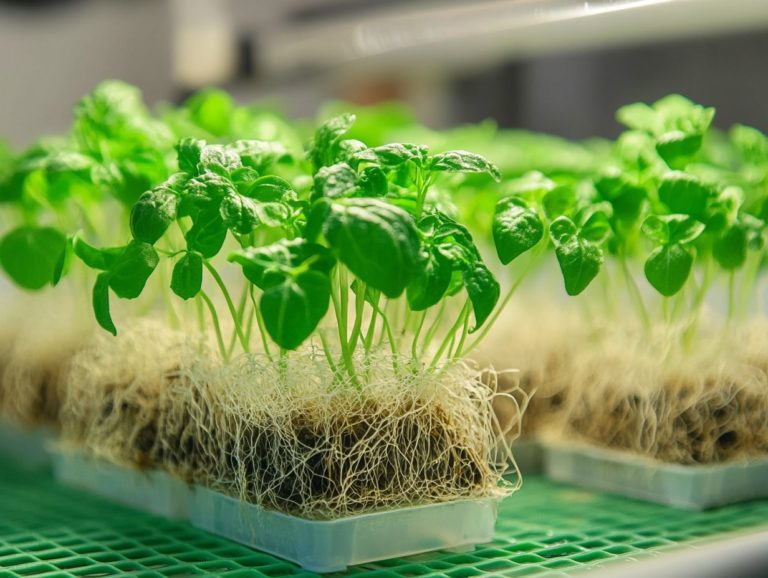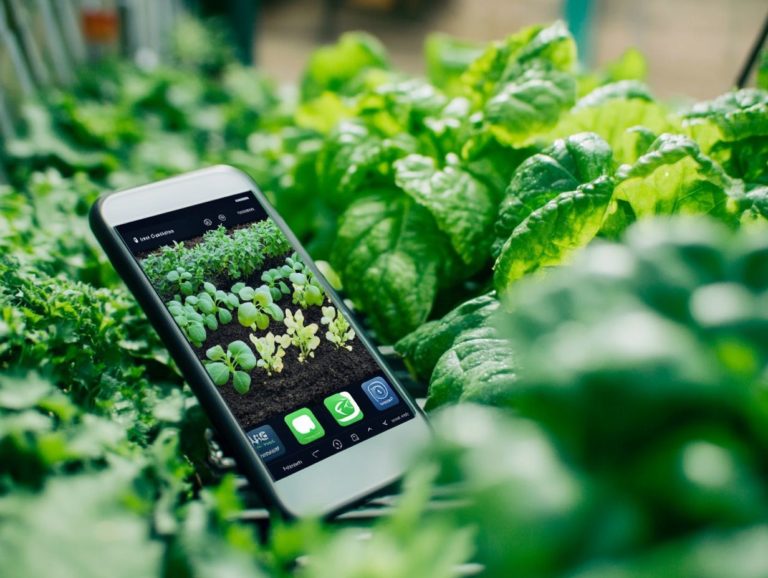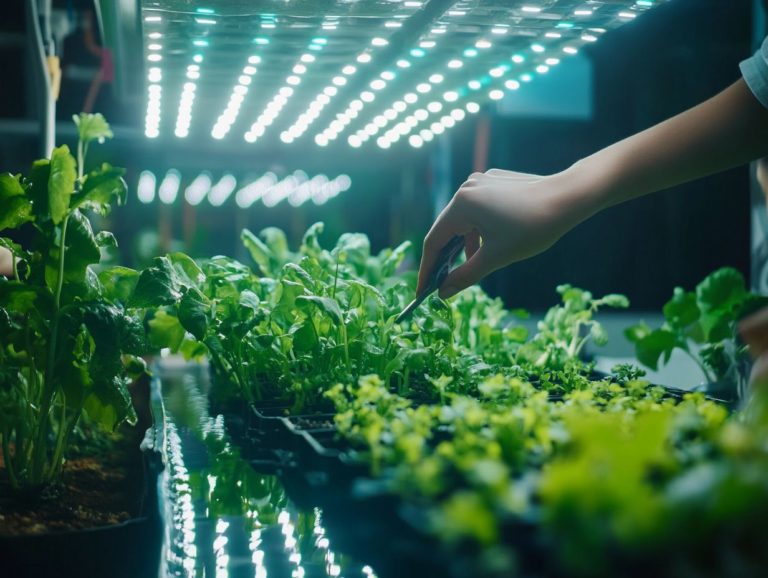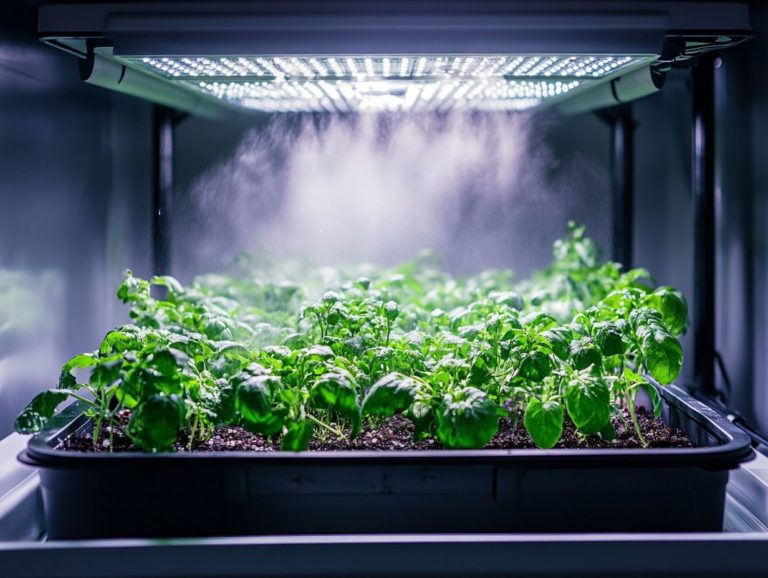How to Harvest Hydroponic Crops?
Hydroponic farming is changing how we grow food. It’s a soil-less method that maximizes efficiency and yield!
This approach also offers many advantages over traditional farming and includes various system types tailored to your needs.
In this guide, you ll explore essential steps for harvesting crops, along with post-harvesting care, such as storage techniques and future maintenance tips.
Whether you re just starting out or aiming to refine your existing skills, this resource will equip you with the knowledge necessary to thrive in the world of hydroponic farming.
Contents
- Key Takeaways:
- Benefits of Hydroponic Farming
- Types of Hydroponic Systems
- Your Essential Guide to Harvesting Hydroponic Crops!
- Post-Harvesting Care for Hydroponic Crops
- Storage and Preservation
- Replanting and Maintenance for Future Harvests
- Frequently Asked Questions
- What is hydroponic farming?
- How do I know when my hydroponic crops are ready to harvest?
- What tools do I need for harvesting hydroponic crops?
- Do I need to wash hydroponic crops before consuming them?
- Can I reuse the water and nutrients from my hydroponic system for future crops?
- Is there a specific time of day to harvest hydroponic crops?
Key Takeaways:
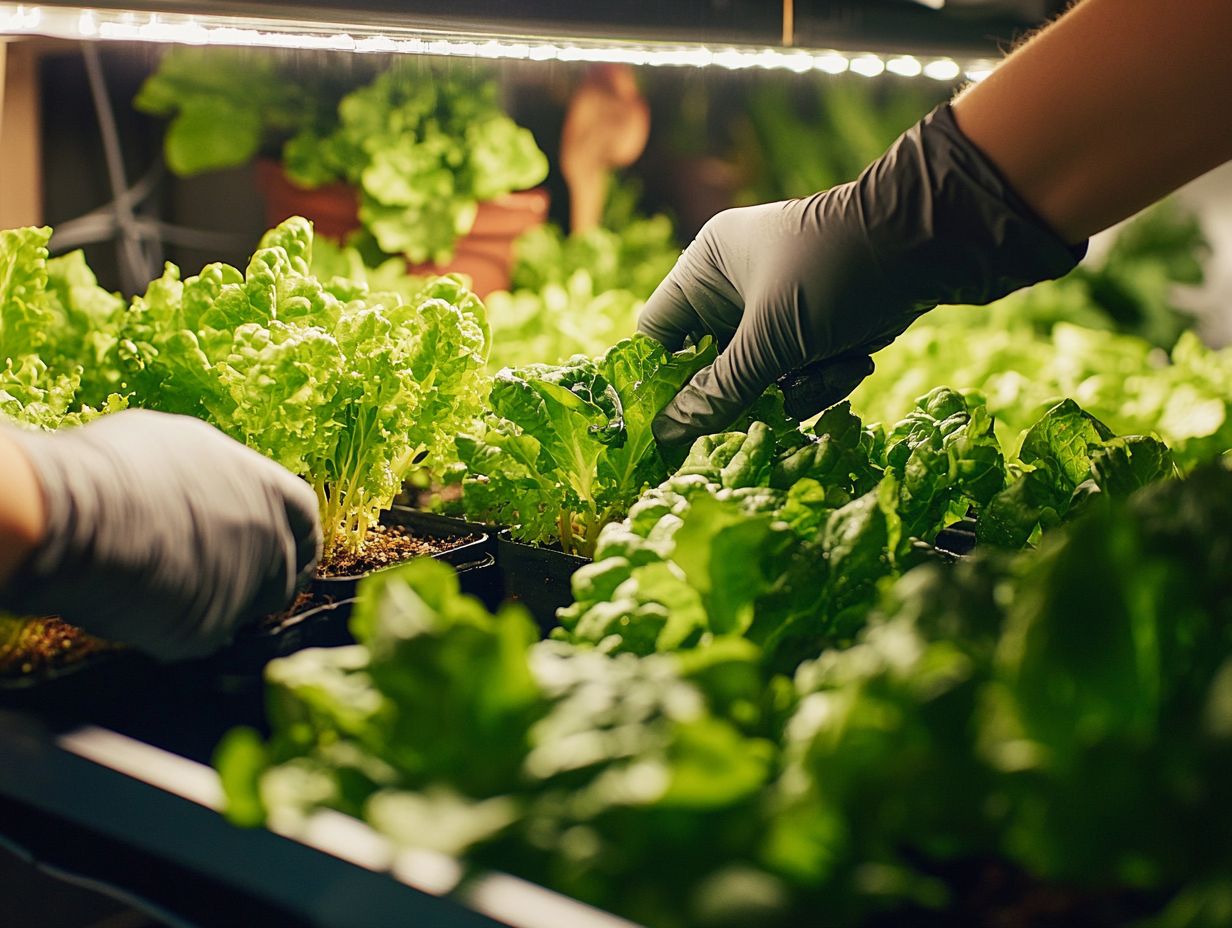
- Switching from traditional farming to hydroponics can provide numerous benefits, such as faster growth, higher yields, and more efficient use of resources.
- There are various types of hydroponic systems available, each with its own advantages and suitability for different types of crops.
- To ensure a successful harvest, it is important to properly prepare and handle the crops during harvesting, as well as provide post-harvest care for storage and future replanting.
What is Hydroponic Farming?
Hydroponic farming presents an innovative method of growing plants, particularly crops like lettuce, without the reliance on soil. Instead, it utilizes water mixed with nutrients that deliver essential minerals necessary for optimal growth.
This approach allows you to farm in urban areas, using vertical farms and greenhouses places where plants are grown without soil to maximize space and yield. It serves as a sustainable alternative to traditional soil-based agriculture.
Hydroponics has roots tracing back to ancient civilizations, such as the Hanging Gardens of Babylon, and it has significantly evolved over the centuries. The basic principle centers on delivering water and nutrients directly to plant roots, enhancing absorption and growth rates while minimizing the use of land and water resources.
With more people and less land, hydroponics is a crucial solution for food security. It promotes sustainable practices while ensuring we can feed everyone. Hydroponic systems can be tailored for various crops, often enabling year-round production regardless of external climatic conditions, solidifying its status as a viable method for feeding future generations.
Benefits of Hydroponic Farming
Hydroponic farming presents a wealth of advantages for you to consider. With higher yields and reduced water usage, it enables you to cultivate crops even in urban settings. It plays a vital role in building a more sustainable food system while elevating the quality of your produce.
By fine-tuning the growing conditions, this innovative method minimizes exposure to contaminants and maximizes nutrient absorption, ultimately enhancing the health benefits of the crops you produce.
Advantages over Traditional Farming
Hydroponic farming offers you a range of advantages over traditional farming methods. Imagine producing crops in controlled environments that are less susceptible to contamination and pests, leading to higher yields and more efficient use of resources.
Unlike conventional agriculture, which heavily depends on soil and is vulnerable to environmental factors like droughts and pests, hydroponic systems flourish in settings where every variable can be precisely managed. For example, water usage in hydroponics is dramatically lower, often requiring up to 90% less compared to soil-based farming. This makes it an exceptionally sustainable solution, especially in regions where water is scarce.
Pest management also becomes a breeze, allowing you to implement targeted strategies without widespread pesticide application. This not only enhances yield consistency but also reduces health risks, making hydroponics a cleaner alternative that resonates well in today’s eco-conscious market.
Types of Hydroponic Systems
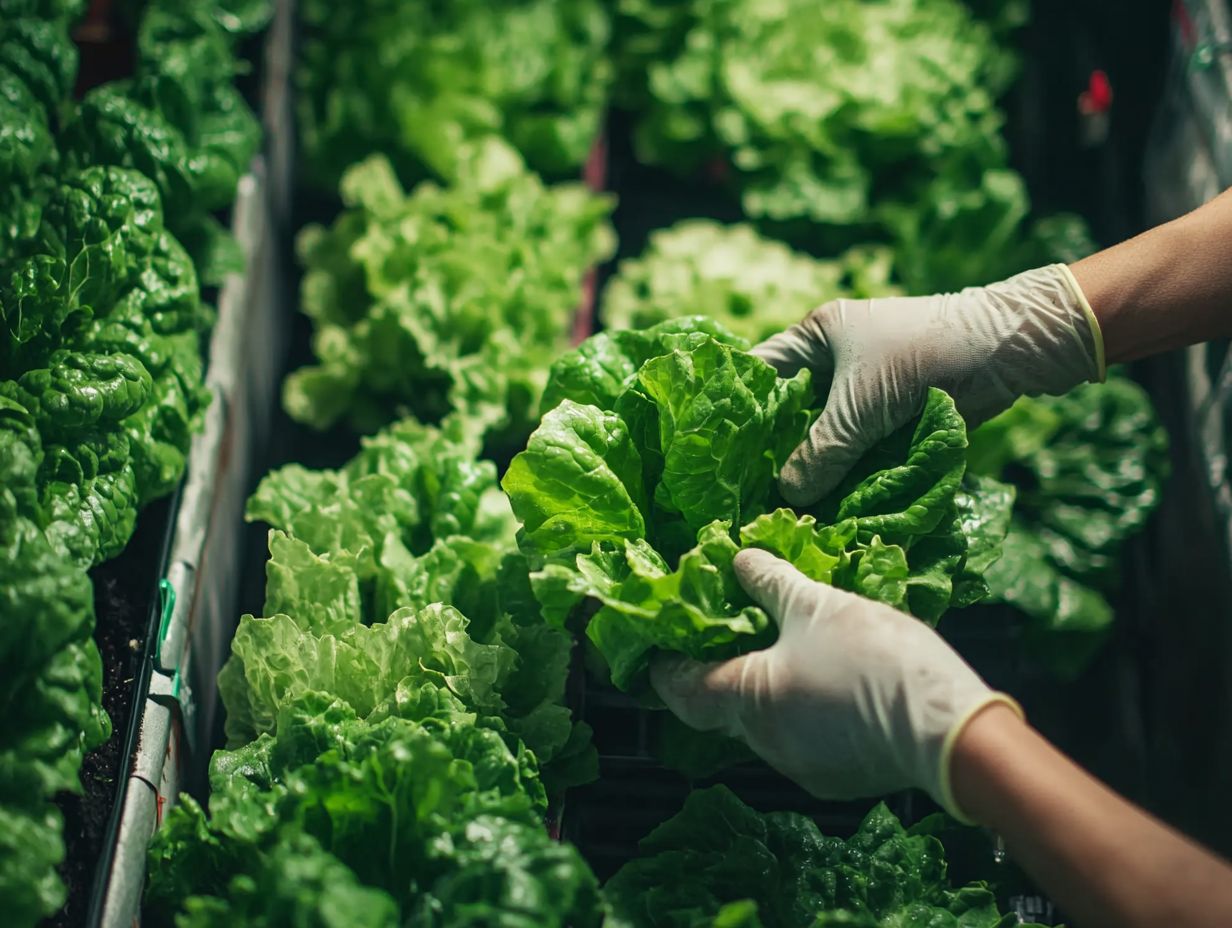
Explore the fascinating world of hydroponic systems! Each system is meticulously crafted to meet diverse growing methods and environments.
From nutrient film technique (NFT) to deep water culture (DWC) and aeroponics, these systems grow plants without soil, delivering nutrients directly to them for optimal growth. Whether you’re cultivating indoors or in a vertical farm setting, these systems cater to various crops.
Overview of Different Systems
Each hydroponic system has unique characteristics, making them suitable for specific crops and indoor growing environments. For instance, NFT uses a continuous flow of nutrient-rich water along a sloped channel. This makes it an excellent choice for fast-growing leafy greens like lettuce and herbs.
DWC suspends plant roots in a nutrient-filled reservoir, perfect for robust plants like tomatoes and peppers. On the other hand, aeroponics mist the plant roots with nutrient solutions, maximizing oxygen exposure, making it ideal for delicate crops like strawberries and root vegetables.
Understanding the nuances of each method is crucial for optimizing yields and maximizing efficiency in your hydroponic endeavors.
Your Essential Guide to Harvesting Hydroponic Crops!
Harvesting hydroponic crops requires attention to several essential steps. Begin with meticulous preparation and continuous monitoring of growth conditions to ensure your plants are primed for harvesting at the pinnacle of their quality and yields.
Preparing for Harvest
Preparing for the harvest of hydroponic crops means ensuring optimal growth conditions and assessing the overall quality of the plants for the best time to harvest.
Several key factors come into play during this critical phase. Evaluate environmental parameters like light, temperature, and nutrient concentrations, as they significantly influence plant health. Understanding the maturity of your crops is vital; overripe plants can lose flavor and texture.
Timing is equally crucial harvesting too early can result in lower yields, while waiting too long may jeopardize the crop s vitality. Monitor these variables to ensure a bountiful harvest and top-quality produce!
Harvesting Techniques
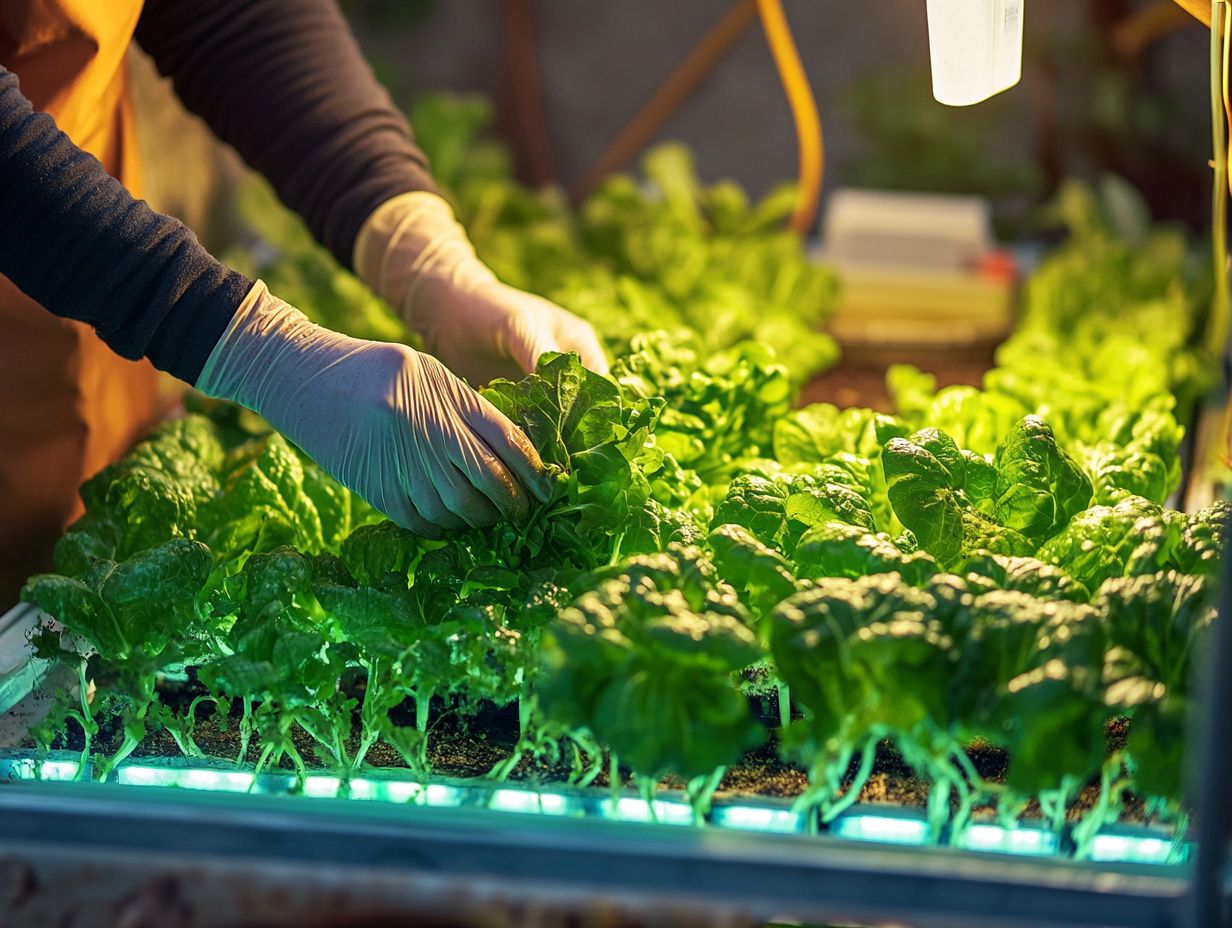
Exciting harvesting techniques await you! Each method is tailored to maximize yield and preserve the quality of your plants, ensuring what you harvest meets market standards.
These methods can range from the labor-intensive charm of manual hand harvesting to sophisticated automated approaches. Manual harvesting allows for meticulous inspection of each plant, ensuring only the finest produce is selected.
On the other hand, automated systems can dramatically enhance your efficiency, reducing labor costs and minimizing damage during the process. Techniques like selective harvesting enable you to pick crops at their peak ripeness, enhancing both flavor and nutritional value.
By choosing the right harvesting strategy, you can significantly influence the marketability and overall success of your hydroponic ventures.
Post-Harvesting Care for Hydroponic Crops
Post-harvesting care for hydroponic crops is crucial for preserving the freshness and quality of your produce. Implement proper storage and preservation techniques to prevent deterioration and maximize shelf life, ensuring your crops remain at their best for as long as possible.
Storage and Preservation
The storage and preservation of hydroponic crops are crucial for maintaining quality and extending shelf life. This requires specific conditions like temperature control and keeping the right moisture level.
These methods help you keep your crops fresh and reduce spoilage risks. For instance, using airtight containers can significantly reduce exposure to air and moisture, which harm the vibrant greens typically found in hydroponic produce. To further enhance your farming techniques, consider exploring the best practices for hydroponic farmers.
Maintaining optimal storage temperatures ideally between 32 F and 41 F ensures that your vegetables and herbs remain crisp and flavorful. Techniques like vacuum sealing or refrigerated transport can enhance the longevity of hydroponically grown items. Retailers and consumers must understand and effectively implement these preservation strategies.
Replanting and Maintenance for Future Harvests
Replanting and maintenance practices are essential for success in hydroponic farming. They focus on restoring growth conditions and the overall health of your plants.
By employing proper replanting techniques such as carefully extracting root systems and replacing growing media you can significantly extend the longevity of your crops. Regularly monitoring nutrient levels and the acidity level of the water is crucial for thriving plants!
Establishing a scheduled cleaning routine for your equipment can help prevent harmful germs that can affect plant health, ultimately fostering a healthier growing environment. By adhering to these best practices, you can create optimal growth conditions that ensure each cycle yields robust, vibrant plants for your future harvests.
Frequently Asked Questions
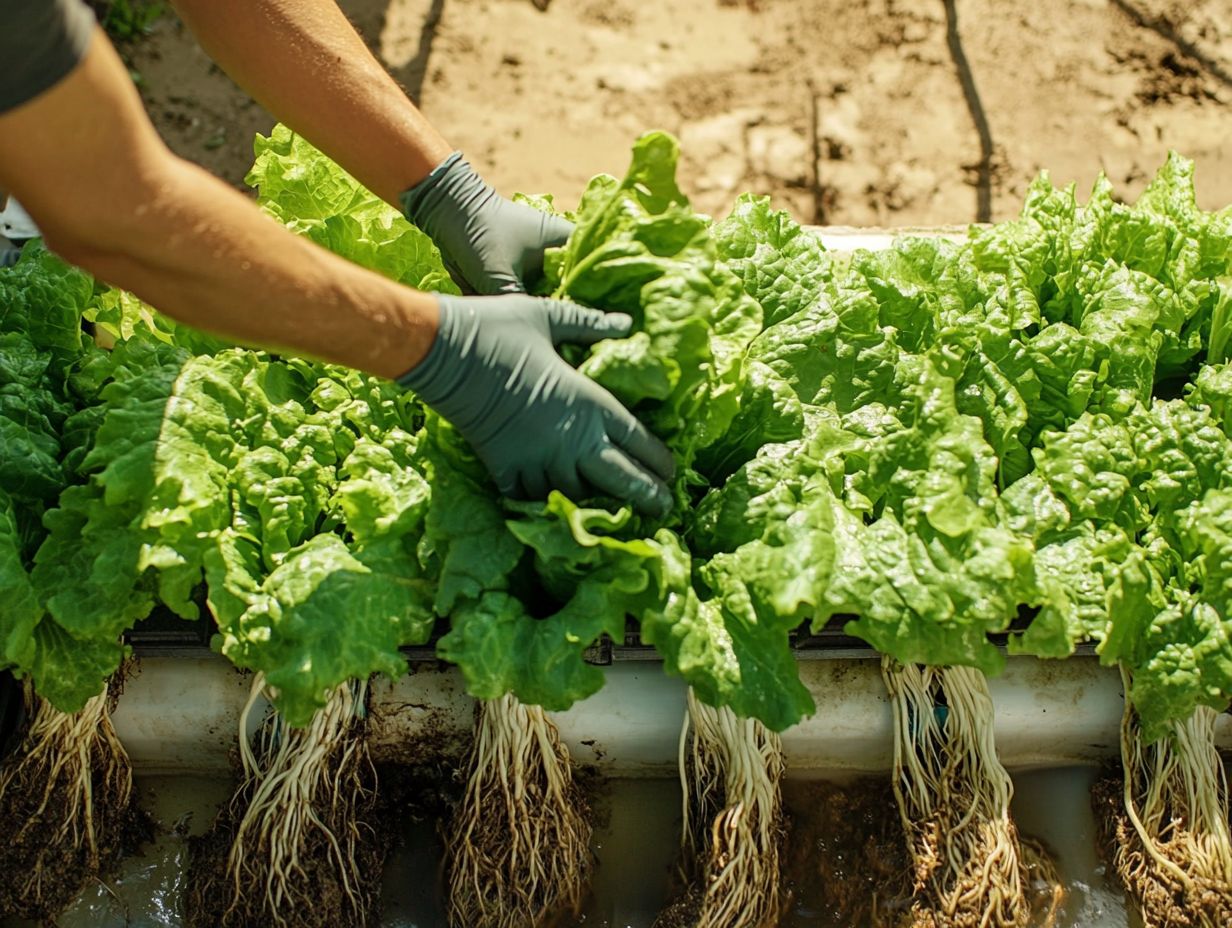
What is hydroponic farming?
Hydroponic farming is a method of growing plants without soil, using a water-based solution to provide essential nutrients.
How do I know when my hydroponic crops are ready to harvest?
The best way to determine when your hydroponic crops are ready to harvest is by checking the plant’s growth stage and maturity level, as well as the recommended harvest time for that specific crop.
What tools do I need for harvesting hydroponic crops?
The tools needed for harvesting hydroponic crops are similar to traditional farming, including pruning shears, scissors, and harvesting knives. You may also need containers or bags for collecting the crops and a clean work surface for processing.
Do I need to wash hydroponic crops before consuming them?
Yes, it is recommended to wash hydroponic crops before consuming them to remove any potential residue or bacteria from the water or growing medium. This is especially important for leafy greens that are typically eaten raw.
Can I reuse the water and nutrients from my hydroponic system for future crops?
Yes, most hydroponic systems are designed for water and nutrient recirculation, allowing for reuse of the solution. However, it is important to monitor the pH and nutrient levels to ensure they are still suitable for plant growth.
Is there a specific time of day to harvest hydroponic crops?
It is best to harvest hydroponic crops in the early morning or late evening when the plants are cooler and more hydrated. This helps preserve the flavor and texture of the crops. Avoid harvesting during the hottest part of the day, as the plants may wilt or become stressed.

